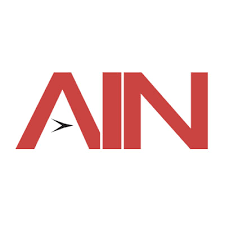CORSIA Offsetting Machinery Starts To Take Shape
19/05/2019
 The ICAO-led Carbon Offsetting and Reduction Scheme for International Aviation (CORSIA) “becomes real” this year and affected aircraft operators should be well into monitoring, reporting, and verification (MRV), according to U.S.-based international law firm ReedSmith. The scheme aims to use market-based measures to cap CO2 emissions from aviation at 2020 levels, leading to carbon-neutral growth from that point.
The ICAO-led Carbon Offsetting and Reduction Scheme for International Aviation (CORSIA) “becomes real” this year and affected aircraft operators should be well into monitoring, reporting, and verification (MRV), according to U.S.-based international law firm ReedSmith. The scheme aims to use market-based measures to cap CO2 emissions from aviation at 2020 levels, leading to carbon-neutral growth from that point.CORSIA is voluntary from 2021 to 2023 in a “pilot phase,” most operators having submitted emissions monitoring plans last year for approval by this past January 1. Countries will have until June 30, 2020, to notify ICAO whether they will voluntarily participate in the pilot phase. As of March, 79 countries, representing 76.63 percent of international aviation activity, expressed an intention to participate. These included the U.S., UK, and Singapore.
ICAO will publish the list of affected aircraft operators attributed to a country, as well as accredited verification bodies, by Dec. 31, 2020. Operators producing less than or equal to 10,000 metric tons of CO2 a year from international flights, along with aircraft below 5,700 kg, and humanitarian, medical and fire-fighting flights, are all exempt from MRV requirements. Exempted entities aside, CORSIA should now be firmly embedded in the workings of most business aircraft operators, as well as airlines, even though the first mandatory phase for the scheme won’t start until 2027. Then there will be three compliance periods of three years each, running to 2035.
For now, the focus is on the MRV element, while the exact nature of “offsetting” in practice is gradually taking shape. Most business aviation operators will be using the CO2 Estimation and Reporting Tool (CERT) for MRV purposes, although they can also opt for fuel-use monitoring. In March, the ICAO Council approved the so-called Emissions Unit Criteria (EUC) and established a CORSIA technical advisory board (TAB), which will use the EUC to evaluate carbon offsetting programs and advise the council on the types of offset credits that will be eligible for CORSIA. While MRV takes place, the offsetting machinery will start to take a solid shape.
At present, countries are in the process of accrediting verification bodies. In April, Verifavia, a French-headquartered emissions verifier, became the first company to announce its worldwide accreditation under CORSIA by the Singapore Accreditation Council, allowing it to offer CORSIA verification services to operators.
AIN Online
> Read the article
Back to all Verifavia in the press







